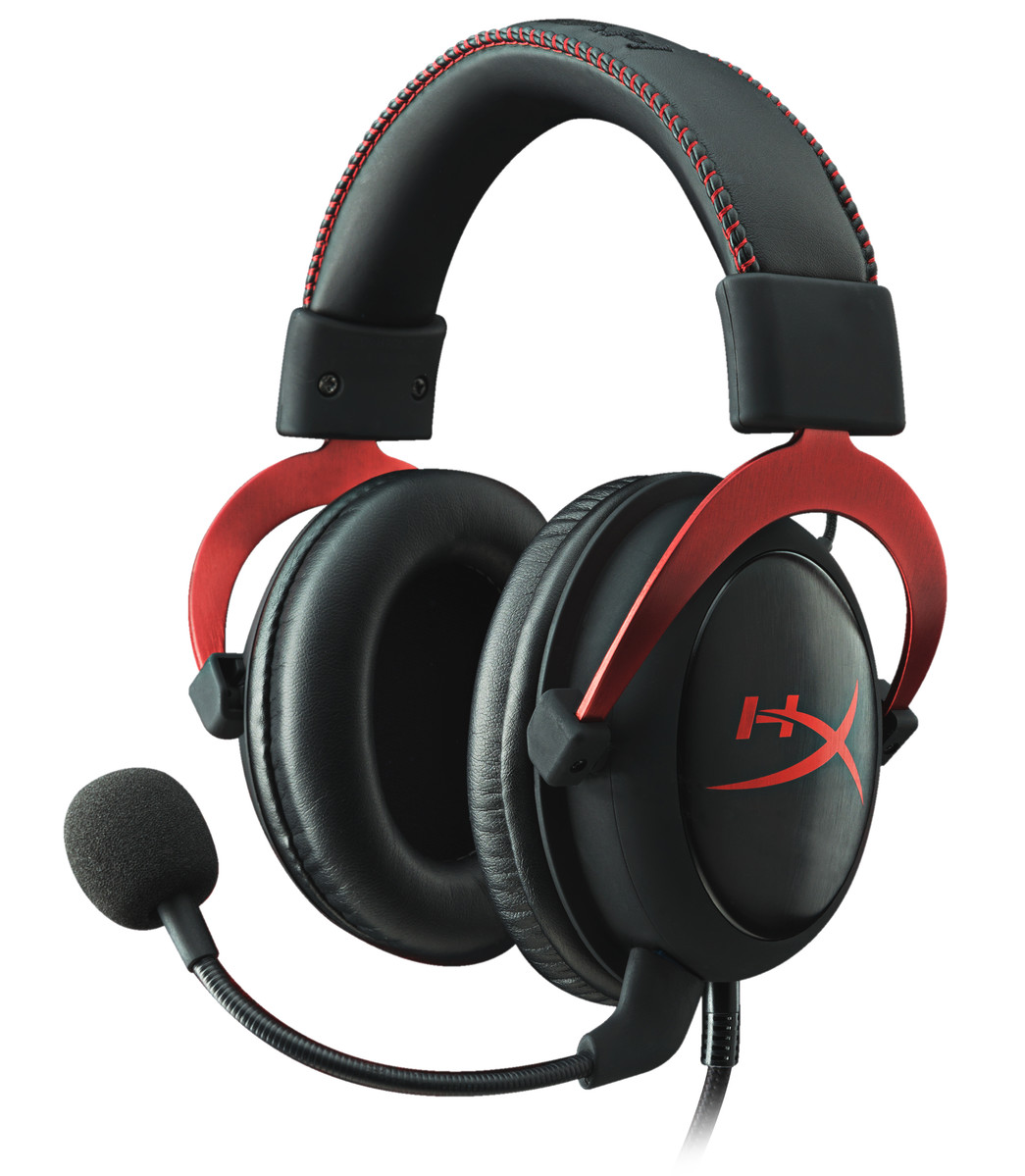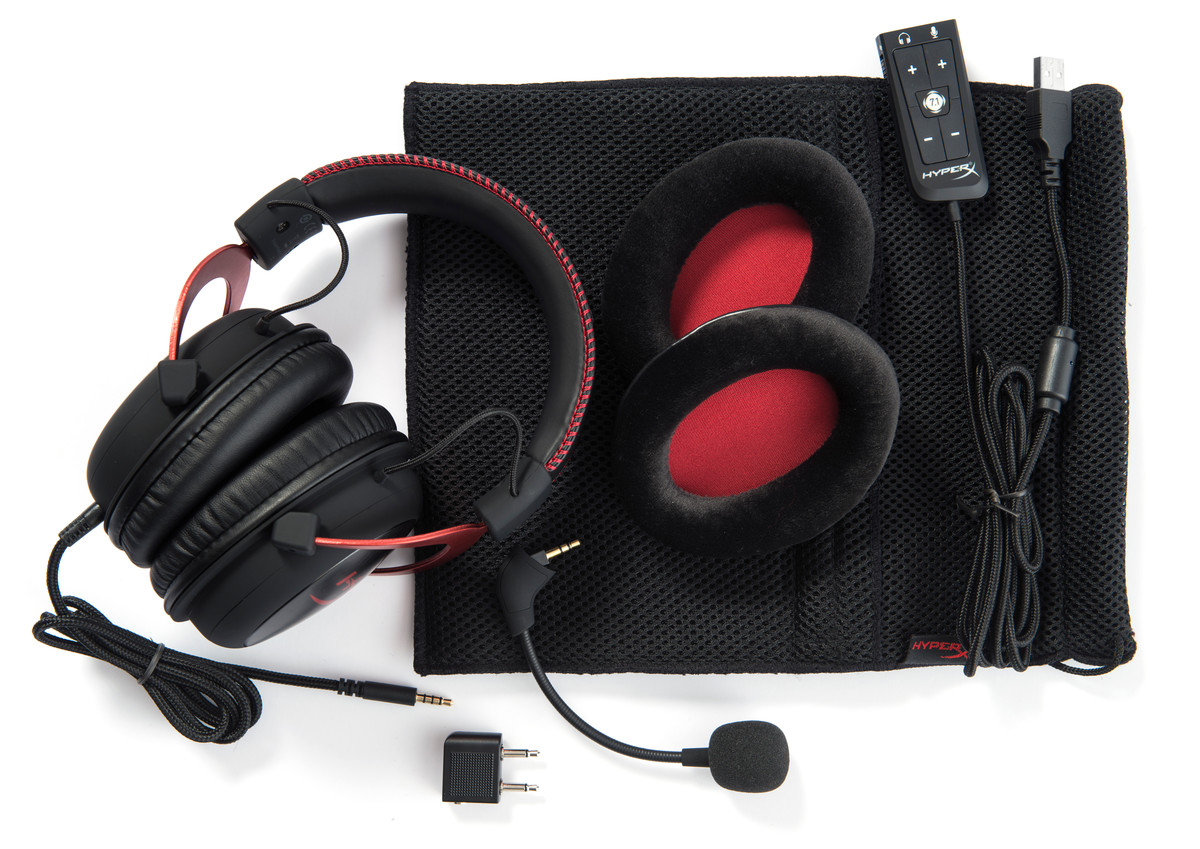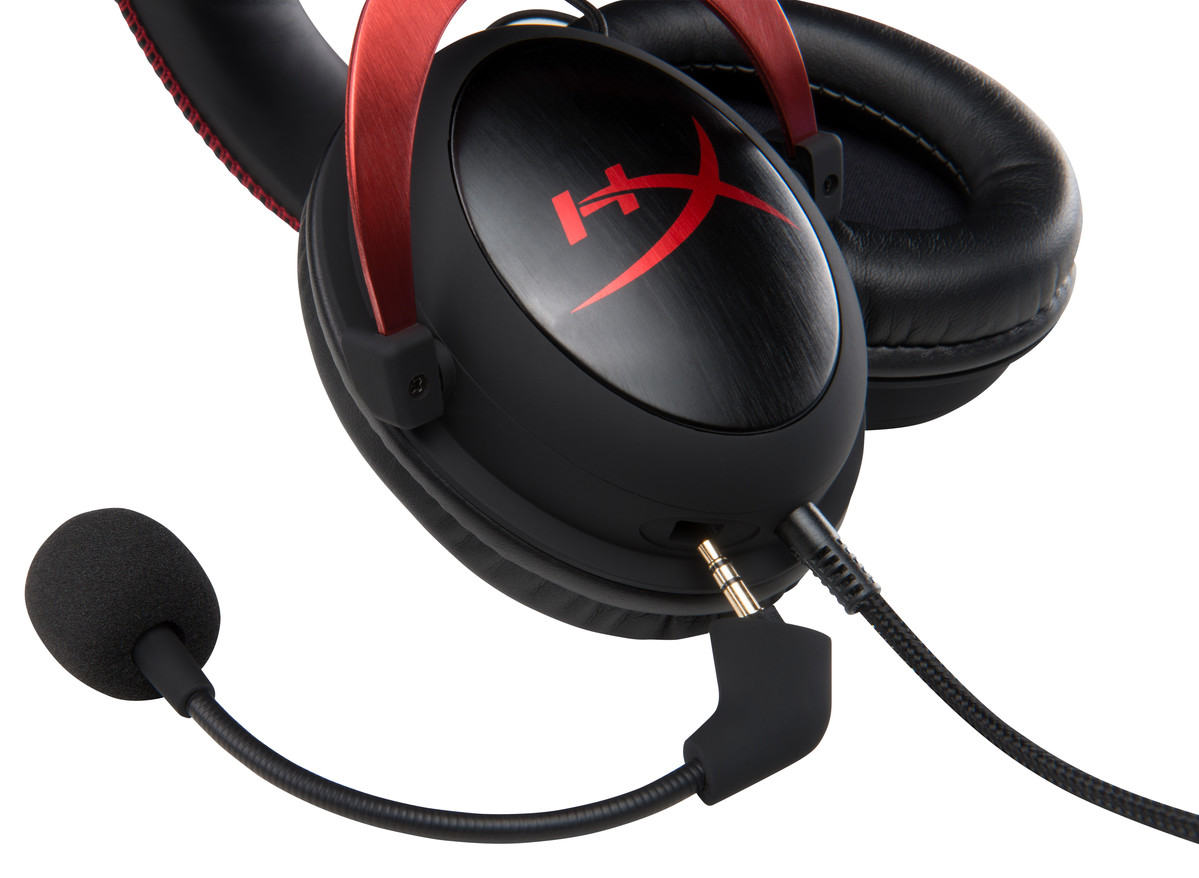The problem with gaming headsets is that you’re often trading quality for convenience. And the expensive gaming headsets don’t often mean that you’re getting a better product if you care about sound quality. Many premium brands focus on style and branding and the sound quality suffers. If you want to drop some serious coin on a gaming headset, don’t. Buy a good set of headphones, preferably open-back ones, and add your own mic. But there is a line where the cost of adding a mic to a set of headphones is prohibitive. Right now, the HyperX Clous sits on that line. Audiophile communities name these as one of the few gaming headsets they recommend. So, after a PAX South meeting with HyperX, I took the Cloud II for a spin.
The HyperX Cloud line consists of 3 different models with different accessories but identical functionality. The base headset is a customized version of headphones done by an OEM that manufactures sets for other companies. The Takstar Pro 80 are based on the same headphones. HyperX just went in and added gaming headset features. There’s a more a durable headband that can be bent and twisted to extremes. Angry gamers can abuse these. HyperX also offers different color schemes. The HyperX Cloud and Cloud II come with a bevy of accessories, including velour earpads, a carrying pouch, and an airplane adapter. The Cloud Core eschews many of those accessories for a lower price and GameStop availability. The Cloud II has a memory foam headband, uses a TRRS connection instead of separate TRS headphone and mic connectors, and comes with an optional USB sound card. This provides virtual surround sound, volume/mic controls, and a 2-meter-long connection.
The HyperX Cloud II is a fantastic sounding headphone for the rpice. It’s not the clearest, most resolving headphone around, but it does a good job at providing an even, well-resolving low-end and mids. Some of the highs are a bit uneven, and there’s a treble spike around the 10,000 Hz region that can become tiring to listen to whenever it pops up. It does mean that some guitar notes and cymbals resolve well and come through better than on other headphones I have, or they just stand out because those frequencies are more pronounced than the recessed frequencies. The sound is decently spacious for a closed headphone, though the upcoming Cloud Revolver I heard back at PAX will be better. Still, these are no slouch.
The microphone is more there for functionality than quality; voice comes off as kind of thin when going through an iPad directly with the headset. But at least it’s detachable so if you want to use a desk mic instead, you don’t have to have the boom mic crowding your face. It would be nice if the cable was detachable as well, so that you could use something like the V-Moda BoomPro as a mic instead, or so that you could use a low-profile mic/remote cable while on the go or while listening to music. Though, the fabric-braided cable is pretty good and feels quite durable. These headphones aren’t folding for portability, but the pouch does include a second pocket that fits all the accessories.
While the HyperX Cloud models are all functionally identical, and I was sent the Cloud II to review, the mobile gamer might question why they would just not go with the Cloud Core or Cloud I. There are two good reasons. The first is that the Cloud II uses a 4-pole TRRS connection so you can use it without an adapter. The other is that the Cloud II comes with a USB sound card that supports the Cloud II. This is multifunctional; if you have a laptop or computer that you want to use any TRRS headset on, you can use this Cloud II card with it. The other is that you can use it with an iOS device using the USB Camera Connection Kit. This is a $30 expense and any sound quality difference is imperceptible. But with it, you are getting volume and mic level control direct from the sound card. You can even use the 7.1 virtualization feature with it, which might improve the sound field that you’re getting from 3D games, especially first-person shooters. But you can’t get true 7.1 positional audio, because the sound card does show up as a stereo card on PC without 7.1 options. Still, it’s an optional effect that’s there for you if you decide to spend the extra $20.
It also does go to show that the future of headphone audio on iOS isn’t so bad if you decide to keep using your old headphones. Cheap adapters like this can and will exist. I’d love something this size, albeit with a shorter cable, for use while on the go, with the volume buttons and added playback controls. Some similar products actually do exist, but not in wide availability. Expect to see more products similar to this USB sound card coming if Apple does kill that headphone jack.
The pleather pads that come built-in and pre-installed on the Cloud II seal and isolate you from noise well. Almost too well. These pads are great for if you wind up using these in noisy environments. But the velour pads might be better if you plan on just using these at home. The leather pads seal so well that it can be difficult to hear yourself talk unless you have some kind of mic monitoring turned on, which isn’t supported on the USB sound card. It would be a great feature to have! The velour pads are a bit scratchy at first but might be more comfortable for you over time, and will make sure you’re not SCREAMING AT THE TOP OF YOUR LUNGS ALL THE TIME WHILE TALKING TO PEOPLE. Switching out the pads is pretty painless, though, so pick which one you like best.
These are one of the best value propositions that you can get from the gaming headset world in its budget. If you want higher quality, you’re better off entering a whole other world of high-quality headphones and bringing your own mic. And at the higher price value, even Audio-Technica and Sennheiser’s gaming headsets might not be the best choices. The problem being that a microphone is just another thing that can go wrong. At least the HyperX Cloud headsets boast detachable mics. If you want a headset that works well across all your devices – mobile or otherwise – the Cloud headests are a great value. The Cloud Core goes for about $64.99, the Cloud I for $79.99, and the Cloud II can be had for $99.99, sometimes with a free game for no additional cost, which makes it the go-to unless you really don’t need it nor the USB sound card it comes with.



